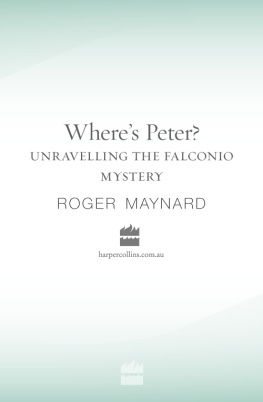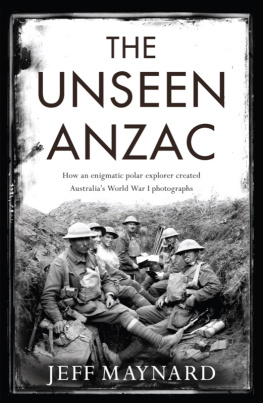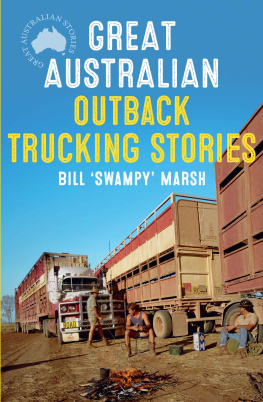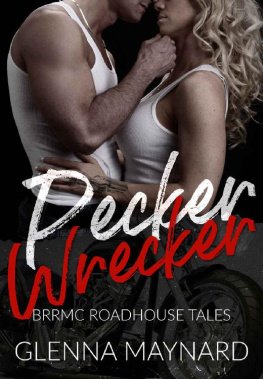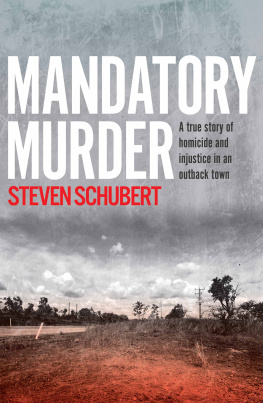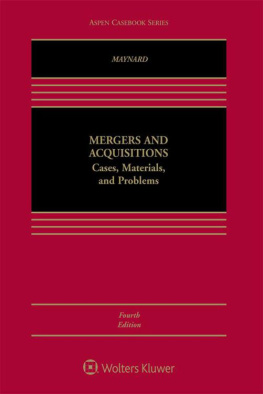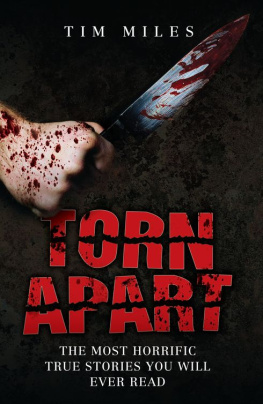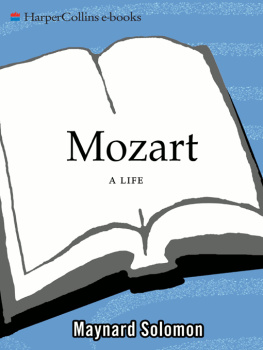Hear all
See all
Say nowt
OLD YORKSHIRE SAYING
I f this book reads like a work of fiction it is because the storyline, the sub-plots, the characters, the red herrings and the backdrop to the drama could have come straight from the pages of a carefully crafted thriller.
This is not to sensationalise what happened on that lonely desert road in the middle of the Australian outback on 14 July 2001, but because so much of what preceded the crime and followed it appears to have more in common with a novelists fertile imagination than the cold-blooded reality of murder.
First there was the horror of the killing and the desolate location in which it was carried out. Then the frightening ordeal of the victims girlfriend as she hid in scrubland for several hours in the dead of night, while the attacker searched the bush for her in vain.
It was the worst of nightmares, the essence of every womans latent fear. Everybody could relate to the sheer terror she must have endured, not knowing whether she would be raped, tortured, strangled or shot if her assailant found her.
There was the immense relief of her eventual escape, the outback heroes who came to her aid and supported her as she fought to cope with the initial trauma.
And there was the hunt for the killer, whose actions sparked one of the biggest manhunts in modern Australian history.
But there were also the questions. Where was the body of Peter Falconio? How did Joanne Lees manage to evade her boyfriends murderer who was equipped with a torch as he came within a few feet of her? And why was the lone survivor of this most heinous of crimes so seemingly reluctant to talk about the attack?
Even the media, who at first reflected the massive public sympathy for the young British backpacker and actively supported her in the immediate aftermath to the murder, began to wonder about perceived inconsistencies in her story.
How did she bring her handcuffed wrists from behind her back to the front? How did she manoeuvre her bound body from the cab of the killers truck to the rear tray, when few, if any, vehicles offered such behind-the-seat access?
Why did she show such little outward sign of physical injury when her attacker had behaved so roughly with her as he threw her to the ground, tied her up and punched her about the head?
And how did the victim leave only a comparatively small pool of blood at the roadside and no sign of spatter when he had been shot at almost point-blank range with a revolver?
While some of these questions were eventually answered, doubts remained over the veracity of other key elements of the case. What was the motive? Were Peter and Joanne on the brink of splitting up after her self-confessed affair with another British backpacker in Sydney? Could drugs have been involved? Had they met the alleged killer earlier in their journey? Had the murderer brushed alongside Joanne at the crowded Alice Springs Camel Cup races on the same day? Could this explain the tiny speck of DNA subsequently found on Joannes T-shirt? And even more improbably, was Peter Falconio still alive?
While police had dismissed allegations of his involvement in a life insurance scam, how was it that two highly credible witnesses had reported seeing him in the company of two other people a week after his disappearance?
Doubts, inconsistencies and outlandish theories have dominated this case over the past four years and led to much wild speculation about the truth behind Peter Falconios death.
In the following pages I have pieced together the evidence, the statements and the courtroom cross-examinations of the key players in this most extraordinary of cases in an effort to establish a clear picture of what really happened. I have returned to some of the witnesses to discuss their evidence and sought out those who played mere walk-on roles in the drama, as well as those who had no part in the legal process but were able to shed light on the possible circumstances surrounding the crime.
My objective has been to separate the fact from the fiction, to place a dividing line between the reality and the many lurid and fanciful tales that grew up around the events that culminated in the terrifying attack on two young British travellers on the Stuart Highway north of Alice Springs.
How did they find themselves caught up in this tragedy? What sort of people were they? And why did the young woman who survived such a frightening experience, which attracted the sympathy and understanding of all those who read about her ordeal, behave so oddly in the weeks, months and years that followed?
And what of Bradley John Murdoch, who was accused of the crime? How could a man who had the manners of a perfect gentleman, according to one of the women who knew him, have also acted as a ruthless killer? Or was he himself set up by those who had their own good reasons to remove him from the scene?
The murder of Peter Falconio is a complex web of violence, deceit, love and greed, all of which were fuelled by factors that until now had to remain undisclosed for legal reasons.
And behind the truth there are the tears and the sorrow for a young man whose untimely death destroyed a loving relationship and devastated two families.
This is their story, a factual account of what was to have been the dream journey of a lifetime but which turned into a nightmare.
CHAPTER 1
THE TRAP
E ven by Australian standards it is a very long road. The Stuart Highway from Port Augusta in South Australia to Darwin in the Northern Territory stretches nearly 3000 kilometres.
In imperial measures it converts to almost 1900 miles or longer than the journey from Lands End, at the far southwestern tip of England, to John oGroats on the extreme north coast of Scotland and back again.
A flat, straight, two-lane highway that cuts through some of Australias most inhospitable terrain, it is also a lonely thoroughfare where tourists rarely drive at night for fear of mechanical failure or hitting a kangaroo. (Even most of the rental car companies forbid driving between the hours of dusk and dawn.)
There are few emergency road services in these parts, no friendly mechanic to repair an engine problem or provide a can of petrol, and only the very occasional public telephone from which to summon help. And forget about the mobile. Outside of a few small towns there is no digital-phone reception for most of an area more than 20 times the size of Britain.
Peter Falconio and Joanne Lees were by now familiar with the long distances of Australian travel and were well aware of the demands that their odyssey had placed on their 30-year-old campervan, which was showing signs of fatigue.
It had taken about three weeks to make their way from Sydney to Australias red centre. On the way they had passed through Canberra, the Snowy Mountains and on to South Australia, turning north to Port Pirie, Port Augusta and Coober Pedy, and detouring to Yulara to visit Uluru, formerly known as Ayers Rock, before finally arriving in Alice Springs on 10 July. They had considered travelling as far as Darwin and possibly Broome and then returning to Tennant Creek to take the Barkly Highway to Queensland via Mount Isa.
Quite why the two young Britons set off from Alice Springs at about 4 p.m. on Saturday, 14 July 2001 is one of many questions that remain unanswered. Why did they want to get away that afternoon? Had they intended to share the driving and motor through the night so they could take advantage of the quiet road and cooler temperatures?
Or were they simply planning to find a peaceful and secluded spot in which to camp along the way? They had a small bed behind the front seat of their VW Kombi so they could sleep in the back if necessary and avoid the inconvenience of pitching a tent.

